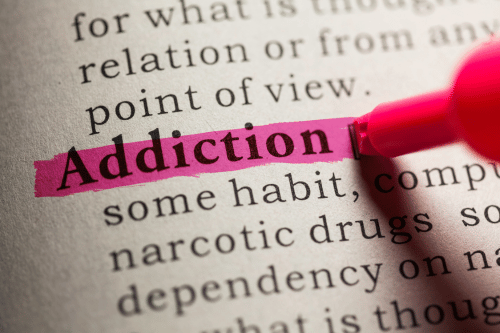7 Stages of Trauma Bonding: Understanding and Breaking Free
What Is Trauma Bonding?
Trauma bonding is a psychological response to abuse where the victim forms an unhealthy attachment to their abuser. This deep attachment develops through repeated cycles of abuse, manipulation tactics, and emotional trauma. An abused person may feel a strong attachment to their abusive partner due to intermittent reinforcement, a manipulative tactic where moments of kindness and excessive flattery are mixed with abusive incidents. Over time, this creates a trauma bond relationship that is difficult to escape.
The Importance of Understanding Trauma Bonding
Recognizing trauma bonding is crucial for breaking free from abusive relationships. Many individuals remain trapped in these dysfunctional attachments because they mistake manipulation for love or fear the emotional withdrawals associated with leaving. Understanding the complex dynamics of trauma bonding, including the cyclical nature of abuse, is a crucial step toward healing. Identifying the characteristics of trauma bonding can help an abused person take the necessary steps to regain control over their emotional landscape and personal boundaries.
Overview of the 7 Stages
Trauma bonding develops through a series of psychological manipulation tactics designed to foster emotional dependency. These stages of trauma bonding reveal how an abusive dynamic progresses.

Stage 1: Love Bombing
The initial stage, also called the bombing phase, involves excessive flattery, intense affection, and displays of affection from the abusive person. This overwhelming attention fosters a deep sense of trust, making the victim feel they have found a fulfilling relationship. However, this stage is a key part of the love-bombing process, designed to create a psychological process that encourages a sense of dependency on the abuser.
Stage 2: Trust and Dependency
During this stage of trauma bonding, the abuser establishes a strong emotional attachment by positioning themselves as the victim’s sole source of love and validation. This can create a sense of trust that makes the abused person emotionally dependent. The cycle of dependency deepens, making it difficult to recognize the early signs of trauma bonding.
Stage 3: Criticism
The criticism phase marks a shift in the relationship. The abusive partner begins to introduce subtle but persistent criticisms that chip away at the victim’s self-esteem. Psychological manipulation becomes more apparent, and the victim starts questioning their sense of identity and sense of reality. The emotional bond they once valued begins to turn into an unhealthy attachment, making them more vulnerable to the cycle of trauma bonding.
Stage 4: Gaslighting
Gaslighting is a psychological abuse tactic used to manipulate the victim into questioning their memories of events and overall perception of reality. This stage involves tactics like rewriting history, denial of past abusive incidents, and blaming the abused person for the abuser’s behavior. This stage can lead to cognitive dissonance, where the victim struggles to reconcile the person they love with the person who is hurting them. This type of emotional abuse is common in narcissistic relationships and other abusive cycles.
Stage 5: Resignation and Submission
At this point, the victim experiences trauma bond withdrawal symptoms and begins to accept the abuse as normal. The emotional experience of this stage leads to a loss of sense of self, as the victim resigns themselves to the abusive dynamic. The abused person may exhibit bargaining and people-pleasing behavior in an attempt to reduce conflict, further reinforcing the cycle of trauma bonding. This sense of dependency keeps them in the relationship despite the toxic environment.
Stage 6: Loss of Self
The victim loses their sense of identity as they conform to the abusive person’s demands. Their emotional landscape becomes entirely shaped by the trauma bond relationship. They may feel disconnected from personal interests, friends, and family. This stage also results in emotional addiction, where the trauma responses associated with the abusive dynamic keep the victim locked in a cycle of abuse. The decrease in brain functioning caused by prolonged psychological manipulation can lead to brain fog and difficulty with daily functioning.

Stage 7: Addiction to the Cycle
Despite recognizing the abusive nature of their relationship, the victim feels trapped due to the addictive nature of the trauma bond cycle. The emotional highs and lows of the relationship create a psychological process similar to substance use disorders. The victim may fear retaliation or feel that they cannot survive without their abusive partner. This stage is what makes breaking free so difficult, as the psychological and physiological bonds are deeply ingrained.
Signs of Trauma Bonding
Common signs of trauma bonding include:
- Feeling unable to leave an abusive relationship despite knowing it’s unhealthy
- Making excuses for an abusive partner’s behavior
- Experiencing fear of retaliation if they attempt to leave
- Prioritizing the abusive person’s needs over personal well-being
- Feeling emotionally addicted to the relationship despite its harmful effects
Breaking Free From Trauma Bonding
Healing from trauma bonding requires conscious effort and external support. Here are key strategies to break free from a trauma-bonded relationship:
Strategies to Escape the Cycle
- Acknowledge the Abuse – Recognizing the abusive dynamics is the first step toward healing.
- Seek Professional Help – A licensed therapist specializing in trauma-informed therapy or Trauma-Focused CBT can provide personalized care.
- Limit Contact – Cutting off communication with the abuser is essential for breaking the cycle of trauma bonding.
- Build a Support System – Surrounding yourself with people who offer emotional validation can help reestablish a sense of reality and personal boundaries.
- Engage in Self-Care Practices – Focusing on self-care, including healthy boundaries, emotional validation, and behavioral therapy, can support the healing process.
The Role of Therapy in Healing
Therapy plays a vital role in helping victims of trauma bonding recover. Working with a mental health professional can help address trauma responses, the aftereffects of trauma, and long-term impacts of trauma bonding. Trauma therapy can provide a safe space for exploring past traumatic experiences, building healthier relationships, and regaining a fulfilling life.
Long-Term Effects of Trauma Bonding
Unresolved trauma bonding can lead to long-term psychological and emotional issues, including:
- Post-traumatic stress disorder (PTSD)
- Chronic illnesses linked to prolonged stress and emotional trauma
- Difficulty forming healthy relationships due to attachment traumas
- Suicidal ideation and depression
- Ongoing struggles with codependent relationships and dysfunctional relationships
Conclusion: The Path to Healing
Understanding the cycle of trauma bonding is a crucial step in breaking free from abusive relationships. With the right support system, trauma therapy, and a commitment to self-care, it is possible to heal and build healthier relationships. If you or someone you know is trapped in a trauma bond relationship, reaching out for care from psychiatrists, therapists, or a trauma-informed mental health professional can make all the difference. Healing is a journey, but taking the first step toward healing can lead to a happier life free from emotional abuse and intimate partner violence.










